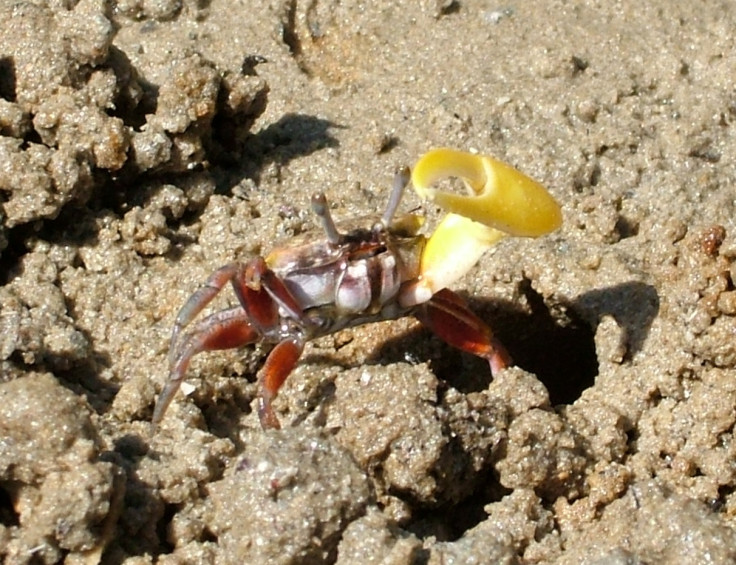Little fiddler crabs attract females by waving and drumming at them with their one massive claw
Fiddler crab courtship display helps show how strong they are and what a big home they have.
Banana fiddler crabs put on a delightful display to attract females, waving one big claw and drumming on the ground. Researchers studying fiddler crabs say this helps show potential mates how strong they are and the size of their home – the better the drumming, the bigger the burrow.
In a study published in the journal Royal Society Open Science, researchers note that the male banana fiddler crab (Uca mjoebergi) is "well known" for its repetitive claw-waving during courtship. But in addition – and when the female approaches – they switch from waving to rapidly rubbing their claw together to create a 'drumming' vibrational signal.
Study leader Sophie Mowles, from Anglia Ruskin University, said: "Males frequently produce elaborate displays to attract females. These are often thought to demonstrate the quality of his genes, or his fitness, through a display of effort. Here, we have demonstrated that a male's level of physical fitness is indeed communicated through the vigour of his display."
Waving and drumming is very costly physically for the fiddler crabs. Being able to perform such an elaborate display would show a female that he is fit. The team tested the crabs by creating a special racetrack. Some male crabs had been induced to put on courtship displays. In sprint races, these crabs performed far worse than those who were not looking for a mate. Their energy was being saved for the females.
When they had not recently courted, researchers found "males that wave and drum more vigorously than their counterparts have a higher sprint speed".

In another test, the researchers found that the frequency of drumming was directly linked with the size of a burrow – the faster the beat, the bigger the home. They continue drumming even when they are back inside their burrow. "Drumming provides an alternative means of assessment of stamina once a male has disappeared from view and waving is no longer possible," they wrote.
Mowles said: "Male fiddler crabs that wave and drum their claws rapidly during courtship were found to have high physical fitness, despite the fatiguing nature of this display. Therefore, by choosing a vigorously displaying male, a female can ensure she selects a good quality mate who can offer her good genes for her offspring."
"Energetically costly 'signals of stamina' reflect the ability of the male to perform other demanding activities such as foraging and sprinting to avoid predators. These are attributes a choosy female should want to pass on to her offspring. The ability to perform a demanding display may also indicate that the male is in good condition, preventing females from mating with diseased or parasitised males."
© Copyright IBTimes 2024. All rights reserved.







